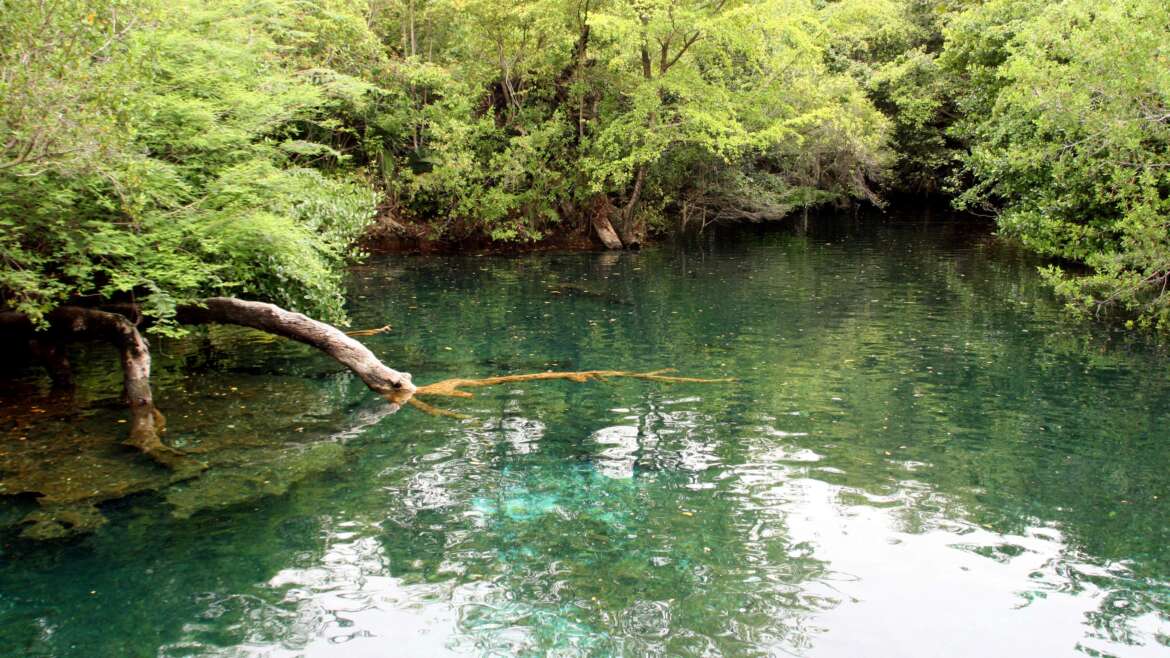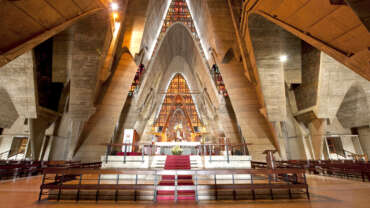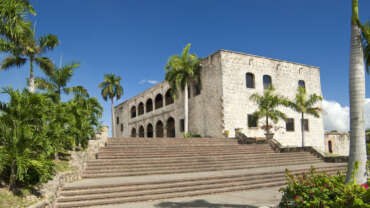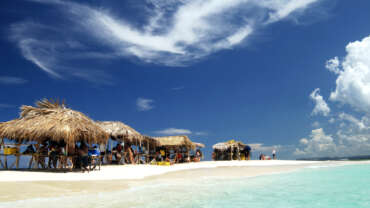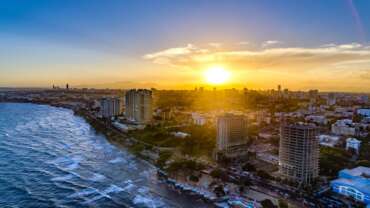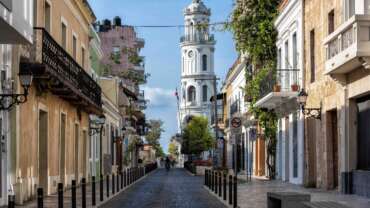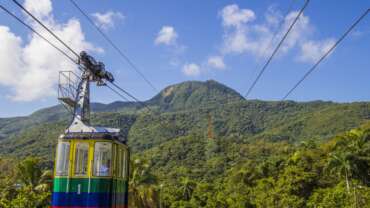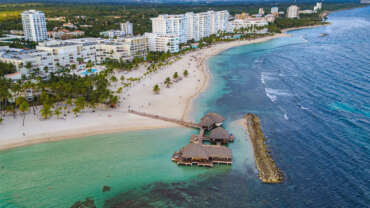Nature in Dominican Republic
BEACHES
White sand beaches that seem to endlessly run into the horizon, punctuated with slim coconut trees reaching the skies: it’s what the Dominican Republic is best known for. South to east, and north, you will keep busy finding your favorite plot of sand along our 1,600-kilometer (1,000-mile) sandy coastline. Over 200 beaches—many of which remain uncrowded and undeveloped—line the Caribbean and the Atlantic coastlines, ranging from a brilliant white to a handful of black sand stretching southwest. Visit Punta Cana’s world-renowned 48-kilometer (30-mile) stretch, but also consider Samaná’s world-ranked beaches such as Playa Rincón. On the north coast, you’ll be spoiled for choice, from Playa Cabarete to Playa Grande, or Playa Punta Rucia. Go off-the-beaten track to Playa El Valle, or Playa Frontón—reached by boat—sure to leave you speechless.
Caribbean-facing beaches are safe year round, while our northern coastline requires more attention to weather conditions before swimming. Sundays are family beach day for Dominicans, and you’ll find plenty of food and music.
NATIONAL PARKS + PROTECTED AREAS
The Dominican Republic’s diverse topography and varying climates combine to create the perfect environment for over 6,000 species of thriving flora and fauna, including a high number of endemic species. In Bayahíbe, Cotubanamá National Park stretches from land—where you can spot the national, endemic Bayahíbe Rose—to the marine jewels of Saona and Catalina islands offshore, teeming with marine life. The largest of all national parks, and part of the DR’s UNESCO Biosphere Reserve, Jaragua National Park includes beach, lagoons, dry forests and cays. Nearby, the Sierra de Bahoruco is the only cloud forest in the Caribbean. Among the most visited parks in the country is also its most stunning: Los Haitises National Park, toured mainly by boat to view its towering rock mounts rising out of the water. In one of the most remote, pristine areas of the country, Valle Nuevo National Park astounds with its dense pine tree forests and frosty mornings.
Whether for hiking, bird watching, or on flora expeditions, the DR’s protected areas should feature on your vacation to do list.
ISLANDS + CAYES
In addition to the mainland’s sparkling beaches, the DR boasts multiple offshore cayes with an even more stunning sea and sand environment. Hop on a catamaran sail to breathtaking Saona or Catalina islands, home to the Caribbean’s longest natural pool, and beaches stretching as far as the eye can see against iridescent turquoise waters. Cayo Arena, off the coast of Puerto Plata, is ideal for a snorkeling trip. Off the coast of Samaná, Cayo Levantado is a perfect lunch and swim escape—often included in tours of Los Haitises, but you can also overnight at the on—site, luxury resort. Off the coast of Montecristi are the most off-the-beaten track cays of the Siete Hermanos.
Island excursions are offered year-round, and are particularly enjoyable during the summer season, when crowds are fewer.
RIVERS + LAKES
Taking a cold river dip, near or away from the beach, is part and parcel of DR culture. Locals love to swim in fresh water rivers, cooking along the banks, and resting in the shade. For more adventure, go river rafting in Jarabacoa and feel the rapids as you tumble over mini cascades past a rocky shore. Rent a kayak and glide along the majestic Chavón River, in La Romana, once featured in the movie Apocalypse Now. In the southwest, the rivers of Barahona—easily accessed as they tumble down to meet the sea—are so magnificent for a swim that they are natural attractions, combining food and drinks on site. Lakes are no less impressive—hop on a boat tour of Lago Enriquillo, sitting 30 meters (138 feet) below sea level at the lowest point in the Caribbean, and home to American crocodiles.
Rivers dips are ideal during the summer when temperatures are at their highest, but you can enjoy them year-round, while lakes are ideal for bird spotting.
CENOTES + SPRINGS
Tucked inside lush rainforests, cenotes and spring-fed pools are breathtaking in color—sparkling, clear turquoise and emerald—and offer refreshing, cold swims in nature. In Punta Cana, look out for Scape Park’s Hoyo Azul—or blue hole—or the Ojos Indígenas Ecological Reserve, both offering easy rainforest hikes to reach the cenotes. Perhaps the most famous DR springs of all are the 27 Charcos de Damajagua in Puerto Plata, where you can leap or slide to your heart’s content into deep azure pools. You’ll find plenty more fresh water escapes, including Cabarete’s El Choco National Park, and along Barahona’s hiking trail toward Cueva de la Virgen.
With so many lush hills, you’re bound to find your favorite natural pool, available to enjoy any time of the year.
WATERFALLS
Abundant rivers lead to numerous waterfalls, some of which offer adrenaline-packed hiking adventures. Puerto Plata’s 27 Charcos de Damajagua waterfall park presents a series of cascades to conquer with jumps or slides, while Salto El Limón waterfall in Samaná is ranked among the highest, tumbling down 30 meters (100 feet). The heart of the DR, replete with mountains, is home to numerous freshwater cascades, and visiting them can easily fill your daily calendar, from Salto Baiguate to Salto Jimenoa I and II in Jarabacoa. Smaller cascades can be found tucked away in the hills all around the country, ready to be discovered.
Waterfall excursions are available from various points of the country—you could even design your trip according to the ones you wish to experience.
GEM HUNTING
The Dominican Republic is known for two major precious and semi-precious stones you will see polished and sold in jewelry stores around the country: amber and larimar. Dominican amber—which was first offered to Columbus on his arrival in 1492, and later made famous in Jurassic Park—is mined on the north coast, in the hills of La Cumbre, the only place where blue amber is found.
The hills of Bahoruco produce the larimar stone—a blue-colored, semi-precious stone found only in the southwest of the DR and nowhere else in the world. Hiking excursions to mining regions are offered year round. Explore the grounds while the men are at work, as they enter and exit the underground with raw stones they’ve just extracted. While on tour, you can purchase unpolished stones directly from one of the recommended miners.
For more history, visit the amber museums in Santo Domingo, Puerto Plata, Punta Cana, and La Romana.
WILDLIFE SPOTTING
If you love critters, then you’ll be happy to find a wide variety in the DR, across coastal and mountainous climates. Hop on whale-watching boat tours from Samaná during the mating season, and watch the world’s largest mammals mating and birthing in our bay. In the north, watch manatees surface at Estero Hondo Marine Reserve, or dolphins flipping in the bay waters of Los Haitises National Park. Birds are a big part of wildlife, with 32 endemic species—look out for the Ridgway’s Hawk—that you can spot on hiking excursions in national parks, but also in the hills, valleys, and on offshore islands of the DR. The Dominican southwest is for reptiles, ranging from the American crocodiles teeming inside Lago Enriquillo, and endangered iguanas that inhabit this cacti-lined, desert-like region.
Whether you’re hiking, kayaking, or boating, excursions abound to get you close to the DR’s wildlife world.
PLANTATION TRAILS
Tucked in the Dominican Republic’s fertile hills are vast agricultural plantations. Take a tour from Punta Cana to the hills of the La Altagracia province, where you will taste chocolate and learn about Dominican coffee from bean to cup. Similar opportunities exist in Samaná’s El Limón plantations. In Puerto Plata’s hills, women-run cacao plantations such as Chocal offer full-day immersion into the world of chocolate, from hiking amid cacao trees to processing chocolate into bars. In the southwest, fruit trees help produce marmalade from mango, passion fruit, and guava.
Hiking our campo will almost always lead to sweet discoveries.



